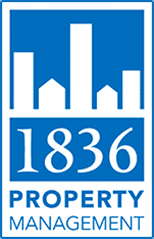Mold is a necessary part of the outside world. When it gets inside homes, though, it can be quite dangerous and scary.
If mold is able to grow inside a home and go undetected, it can produce both allergen and irritants, as well as toxic substances. That’s why if you’re involved in real estate investing, it’s essential to prevent the growth of mold at all costs, and take immediate steps for mold remediation when it is discovered in your rental property.
Below, we’ll describe why mold is so dangerous, what legal obligations you have in regard to mold at your rental property and how working with a trusted Austin property management team can ensure your property is safe.
Health Concerns Regarding Mold
As mentioned before, mold is naturally found in the environment, and it’s actually a crucial part of the environment. It aids in the process of breaking down organic matter that is dead, such as dead trees and fallen leaves.
When mold enters and grows in an indoor space, however, it can be quite dangerous.
On the mild end, mold can cause allergic reactions such as sneezing, red eyes, skin rash, a runny nose and even a fever. Mold can be particularly dangerous to people who have asthma. Even people who aren’t allergic to mold can suffer from irritation of their eyes, throat, nose, lungs and skin.
On the more severe end, mold can cause serious negative reactions. People can experience shortness of breath or have trouble breathing. Mold can even cause an infection in one’s lungs.
Proper property maintenance is key to help spot mold in its early stages, and to initiate mold remediation tactics should your rental property need it.
Legal Obligations Concerning Mold
There isn’t any federal law in place that deals with mold as it pertains to a rental property or real estate investing. There’s also no specific law on the books in Texas that deals with mold.
That being said, mold remediation does fall under a Texas law – Texas Property Code 92.056 – that says all landlords are required to remove or remedy any condition that can affect a tenant’s physical safety or health.
A tenant has a right in Texas to report mold or other dangerous conditions to their landlord by written notice. Once received, the rental property owner and/or property management partner must take steps to remove the mold.
While there isn’t a defined time period by which the mold remediation must be done, the law has generally been interpreted to be seven days, with some exceptions. Either way, it’s always a good idea in real estate investing to address mold concerns as soon as possible.
Here’s What to Do When Mold is Present
If mold is found in your rental property, you should take immediate action to rectify the situation. However, the steps you should take depend on how and when the mold was discovered.
When You Start a New Property Management Partnership
If mold is found at your rental property when you’re beginning a new partnership with an Austin property management company, you should assess the situation to see what you’re dealing with. The type of mold that it is doesn’t matter; from a mold remediation standpoint, it’s all the same.
If the area where the mold is present is less than 25 square feet, local companies can handle the mold remediation. If it’s larger than that, hiring a Mold Assessment Consultant, or MAC, is required under the law. That firm will create what’s known as a Mold Remediation Protocol, which is essentially a report that details the issue and the plan for getting it out.
Once the mold has been removed, the MAC will issue a Certificate of Mold Remediation, which concludes the mold was removed properly and the rental property is safe. This is essential to hang onto, because if you sell the rental property, you’ll need to provide this certificate to the buyer.
The bottom line is that rectifying a mold situation before your property goes on the market will be required.
When a Resident Puts in a Request
Like all other resident requests, you should have your maintenance department assess the situation immediately and according to emergency status. The longer the issue goes unaddressed, the more serious – and expensive – it can become. A delayed response might also cause a rift in your landlord-tenant relationship.
If mold is found in your rental property, then you’ll need to follow the same steps above. Your legal obligations are the same regardless of whether you discovered the mold or a tenant did. The only difference is you’re required to conduct mold remediation immediately when you have a tenant in the unit.
Mold can be hard to spot at times, especially by those who aren’t trained or experienced in identifying mold. That’s why regular property walkthroughs by your Austin property management team can help catch hard-to-spot mold.
Work with a Trusted Austin Property Management Company
While mold is a necessary part of the natural environment, it can be extremely dangerous if it grows inside. Exposure to mold can cause anything from minor irritants to serious health concerns.
That’s why if mold is found in your rental property – whether by you or an existing tenant – it’s important to address the concern right away. When you partner with a trusted Austin Property Management team like 1836 Property Management, you can rest assured that all proper procedures will be in place to take mold remediation steps when necessary.
By having a solid property maintenance plan in place, the experienced professionals at 1836 Property Management can ensure that your rental property is safe for tenants and any issues are addressed. This is just one way we help our clients become successful in real estate investing.
Contact us today to learn more.
By: Kayla Gonzales, 1836PM Marketing Manager







